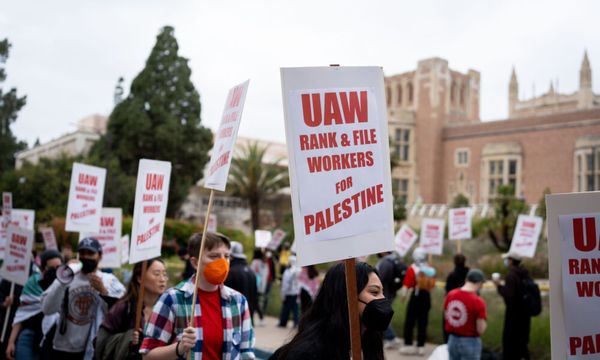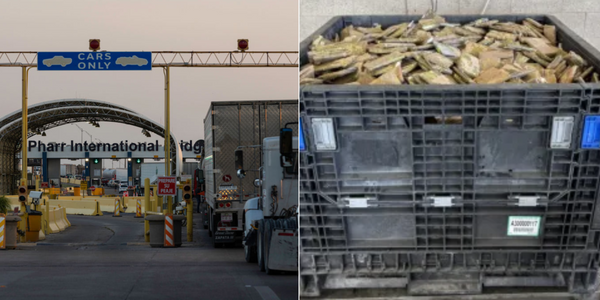
Lombok, Indonesia – Azra, 13, recalls running out of her house when a violent magnitude 6.9 earthquake struck one evening about six years ago. Most people were inside their homes eating or watching television.
“We saw the houses collapsing one by one, it brought a big trauma for us,” she recalls.
The shallow inland earthquake that hit the northwest of the island on August 5, 2018, was the strongest ever recorded on Lombok, killing 560 people and damaging or destroying nearly all structures in the rural region that is a two-hour drive through forested mountain passes from the main town of Mataram in the south.
Azra’s home was also destroyed. “I was thankful there were no victims in my family, but I felt very sad because I know how my parents had struggled with money to build our home,” she says.

In the villages along the coastal road, simple homes have since been rebuilt and life around the lean-to shops and warungs (kiosks or small eateries) selling fried chicken and rice appears to have returned to normal. But the disaster is having a lasting effect on children’s education.
After the earthquake, schools were closed for three months. When they reopened, most children found themselves learning in temporary classrooms set up in tents on school grounds or in mosques. More than 400 schools were assessed by the country’s National Disaster Management Authority as severely damaged by the quake and completely unusable. Some schools have since been rebuilt, but the COVID-19 pandemic disrupted the recovery efforts, and progress has been slow ever since.
Learning under ragged sheets of plywood
At the start of this year, Azra and her Year 7 classmates were still studying in a makeshift classroom at her school, SMPN 3 Tanjung Junior High, situated by farmland on the outskirts of a coastal town.
The school was using barn-like buildings, patched with ragged sheets of plywood, because not enough buildings had been renovated by the government for all 400 pupils.
“We didn’t feel comfortable in these classrooms because it was very hot,” she says. In the rainy season (November to March), there would be flooding and the children sat at their desks with their feet in puddles.

Things have improved for Azra and her classmates since then. In February, they became the first of the pupils at Tanjung school to be taught in four new permanent earthquake-resistant classrooms made of recycled plastic blocks.
In the dusty school quadrangle, the new classrooms stand like beacons of hope beside the mangled, half-collapsed ruins of the former library and science laboratory, which have yet to be pulled down and are a constant reminder for students and teachers of the devastation the earthquake caused.
The so-called block schools are part of a pioneering initiative run by Classroom of Hope, an Australian non-government organisation helping to speed up the school rebuilding programme in north Lombok. It uses a modular building system that slots together like Lego, enabling whole buildings to be assembled within a week.
The programme is also taking what its leaders describe as a “circular economy” approach to reducing Indonesia’s plastic waste pollution, with each classroom removing approximately 1.8 tonnes of plastic waste from the environment.

The main driver for the block school initiative is to improve access to education, says Classroom of Hope CEO Tanya Armstrong. “Our research has found that children learn half as much in temporary settings than they otherwise would in a permanent school,” she says. Field assessments conducted by the charity identified at least another 100 schools in north Lombok that are needed as part of the earthquake recovery.
When Al Jazeera English visited some of the newest block schools last month, the rejuvenated enthusiasm for learning among the students and teachers was apparent inside the neat and spacious classrooms. Pupils and teachers alike say they feel more secure in these buildings than those built with conventional materials – particularly since the earthquake.
An emotional challenge
At SDN 4 Sigar Penjalin primary school, which is also in Tanjung village, two block classrooms are being finished off in preparation for replacing the tatty shelters under the awnings of the damaged school building that have been used as classrooms until now. These structures had only flimsy wood and metal screens separating pupils from the traffic noise and fumes of the busy main road.
The addition of the new classrooms to the buildings that are in use is bringing a much-needed sense of normality to the school after the emotional challenges communities have faced, says principal Baiq Nurhasanah, 46. “There were still tremors every day for a month after the quake and people who were staying in the hills [for fear of tsunamis] were afraid to come back to their villages. Children were very worried about returning to school,” she says.
Wearing a bright yellow hijab, the jovial teacher affectionately greets the children who run over to stand with her in the schoolyard, but she becomes tearful remembering one of her students who was among five family members who died when their home collapsed. “The trauma remains in everybody here,” she says.

Crucially, the block schools are designed to withstand significant seismic activity. In tests by civil engineers at the University of California, the honeycomb-shaped modules behaved with more flexibility than conventional materials and are 100 times lighter than reinforced concrete, which is expected to minimise the risk of injury in the event of an earthquake.
“With this new material, the children will feel safer and eager to study,” says Nurhusanah.
Classroom of Hope has partnered with Finnish company Block Solutions, which developed the modular building system for speedy construction, making it the first of its kind for disaster relief construction. A dedicated Block Solutions Indonesia factory was opened in the south of Lombok in June 2023 to reduce the costs and carbon footprint of shipping the modules from Finland.
At the Indonesian plant, the blocks are made from recycled polypropylene (PP), typically found in opaque bottles, such as those used for cleaning products and food storage containers. The material is collected from Lombok and other provinces and processed into pellets at the nearest recycling plant in east Java to be made into the blocks. The company is now also producing the blocks for other construction projects across Indonesia.
The first five-classroom block school was built in June 2021 for Taman Sari primary school, on the slopes of a densely wooded area. Part of Medas Bentaur village on the west coast, the school serves a population of less than 1,000, who mainly make a living from picking and selling bamboo used for building, or as construction workers.
Since then, 22 more schools with a total of 70 classrooms have been built, working towards a goal of 117 schools over five to seven years, depending on fundraising, says Armstrong.
Decisions on where block schools are built are made in cooperation with the government for north Lombok. Classroom of Hope is also partnering with NGO Happy Hearts Indonesia, which works with communities to assess local needs.

‘Still haunted’
With the school reconstruction process dragging on in north Lombok, there is high demand for the block schools, but not all of the earthquake-damaged schools can be selected for the programme despite appearing to be in dire condition.
This is the case for SD 6 Pemanang Barat primary school, a 20-minute drive from Tanjung village into hills overlooking rice fields.
Principal Haji Juramli, 54, solemnly shows the classrooms where children are being taught beneath cracked ceiling panels, exposed metal frames and electrical wires, and flaps of plaster hanging down. Despite this, the school has been assessed to be structurally safe.
He says he is appealing to the authorities as he believes the buildings are dangerous. “The buildings have collapsed a bit, the roof is falling in, walls are cracking, we are not enjoying being in the school, we are still haunted by the situation,” he says.

Although Pemanang Barat will not be rebuilt, the government has agreed to renovate the school, although a time scale has yet to be set. This means it will not receive a block school because “we have to prioritise where children are most in need – where they are learning outside or there are 70 kids in a classroom”, says Armstrong. The cost of each block school classroom is 22,000 Australian dollars ($16,000) and the charity is reliant on philanthropic funding and donations.
However, the school has received a donation of two block toilets that are currently being built. “The children have been using the river, and girls on their periods just don’t come into school, so the toilets will have an impact,” she adds.
For now, Classroom of Hope is focusing on completing the school rebuilding programme in Lombok, but Armstrong believes there are many other remote areas where it could be replicated.
Across Indonesia’s island provinces, 413,000 (78 percent) of the nation’s schools were found to be at risk of earthquake in 2022, based on government inspections and self-assessments made by schools, says Fadli Usman, humanitarian and resilience director at Save the Children Indonesia.

Environmentally sustainable approach
In recent years, the central government has made efforts to reduce school vulnerability to earthquakes, he says, including implementing an annual programme to renovate damaged schools with an earthquake-resilient modular building system using reinforced concrete. However, “there is a need for more capacity and monitoring to be transferred down to district and village level”, Usman adds.
The damage criteria for these national government-funded renovation programmes are “very strict”, says Roi Milyardi, assistant professor in civil engineering at the Universitas Kristen Maranatha, in Java.
“Due to budget constraints, priority is usually given to those with severe damage, such as collapsed ceilings, so that buildings that are damaged but not ‘severe’ will be left, or passed to the local government to repair them. Here, it is dependent on the political will of local government officials,” he adds.

Civil engineer Milyardi and Usman of Save the Children agree that the block school programme has the potential to be replicated if it is adopted into the national response, as an environmentally sustainable approach to earthquake resilience.
While Tanjung school still needs more facilities, including a new laboratory and library, the block schools are helping to restore a much-needed sense of normality, says school committee chief Wayan Suadan, 63.
“The earthquake impacted deeply on our students’ education and their socioeconomic backgrounds because they need comfortable conditions to learn. It has also taken a long time to heal from the trauma and rebuild their belief that the condition is safe now,” the retired civil servant says.
For Azra’s classmate Azril, 13, they are “much more comfortable” than the temporary classrooms. Azra says they have made her feel more conscientious. “We are very enthusiastic to have all our lessons in the block school because it’s very unique, just like Lego,” she grins, adding that if their teacher does not come to school, they try to find another. “We want to be in the classroom.”







